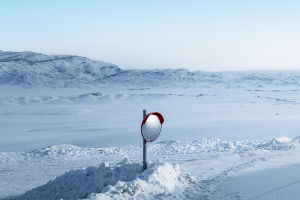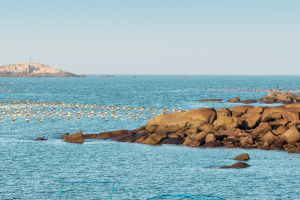Europe is a continent consisting of 45 countries and regions and covers an area of 10.16 million square kilometers. It is bordered by the Atlantic Ocean to the west, the Arctic Ocean to the north, the Mediterranean Sea and the Strait of Gibraltar to the south, and the African and Asian continents to the east.
Europe has one of the most complex and winding coastlines in the world, with many peninsulas, islands, harbors, and inland seas that stretch deep into the continent.
The rich marine environment in Europe provides the continent with rich fishery resources, and the European coastal fishing area accounts for approximately 32% of the total area of the world's coastal fisheries.
Europe is home to a wide variety of fish, including cod, mackerel, anchovy, salmon, eel, sardines, and tuna. The main fish-producing waters are distributed in the Norwegian Sea, the North Sea, the Barents Sea, the Baltic Sea, the Bay of Biscay, and other areas.
The 21st century is known as the century of the ocean, and the fishing industry is actively promoting the development of offshore fishing vessels to explore the ocean. Fishing equipment is an important part of fishing vessels and is also a key factor that affects the cost, performance, efficiency, quality, and safety of fishing vessels.
As the decline of offshore fisheries continues, developed countries in the fishing industry have been investing heavily in equipment technology to accelerate the development of offshore fishing vessels.
The development of fishing boat equipment is increasingly trending toward large-scale, automated, intelligent, specialized, offshore fishing boats made of glass fiber, and other features. The product support and system support have become more perfect.
With the rapid development of mechanical and electronic information technology and the development opportunities brought by ship industry technology, countries have increased research on fishing vessel types, fishing equipment, fishing navigation technology, and automatic control technology of aquatic product finishing equipment.
Modern acoustic technology, electromechanical and hydraulic automation control technology, satellite remote sensing technology, radio communication technology, and other technologies have been successfully applied in the field of fishing vessel fishing equipment. This modernization process of fisheries has promoted selective and precise fishing of important fish.
The fishing methods used by developed European fisheries mainly include trawling, purse seining, longline fishing, squid fishing, and other methods. Due to the division of the 200 nautical mile fishery exclusive economic zone and the problem of fishery resources, the operating sea area of fishing vessels is getting farther and farther from the base fishing port.
Therefore, developed countries in marine fisheries are paying special attention to the development of large or very large fishing vessels, especially trawlers and purse seine fishing vessels, for the development of pelagic fish resources. The use of a strict quota system has been implemented to rationalize the use of marine fishery resources.
European large trawlers have a total length of more than 140 meters, a ship's width of more than 18 meters, a speed of up to 17 knots, a fish hold volume of 11,320 cubic meters, and a stranding machine towing force of more than 100 tons.
These ships are mainly for pelagic trawling foreign large-scale fishing vessels and tuna purse seine ships, which also reach more than 100 meters in length and a speed of up to 17 knots.
The purse seine and trawl fishing equipment generally use advanced hydraulic transmission and electrical automatic control technology, making equipment operation safe, flexible, and highly automated.
Europe is a continent with a rich marine environment that provides it with abundant fisheries resources. With the increasing decline of offshore fisheries, developed countries in the fishing industry are actively promoting the development of offshore fishing vessels to explore the ocean.


